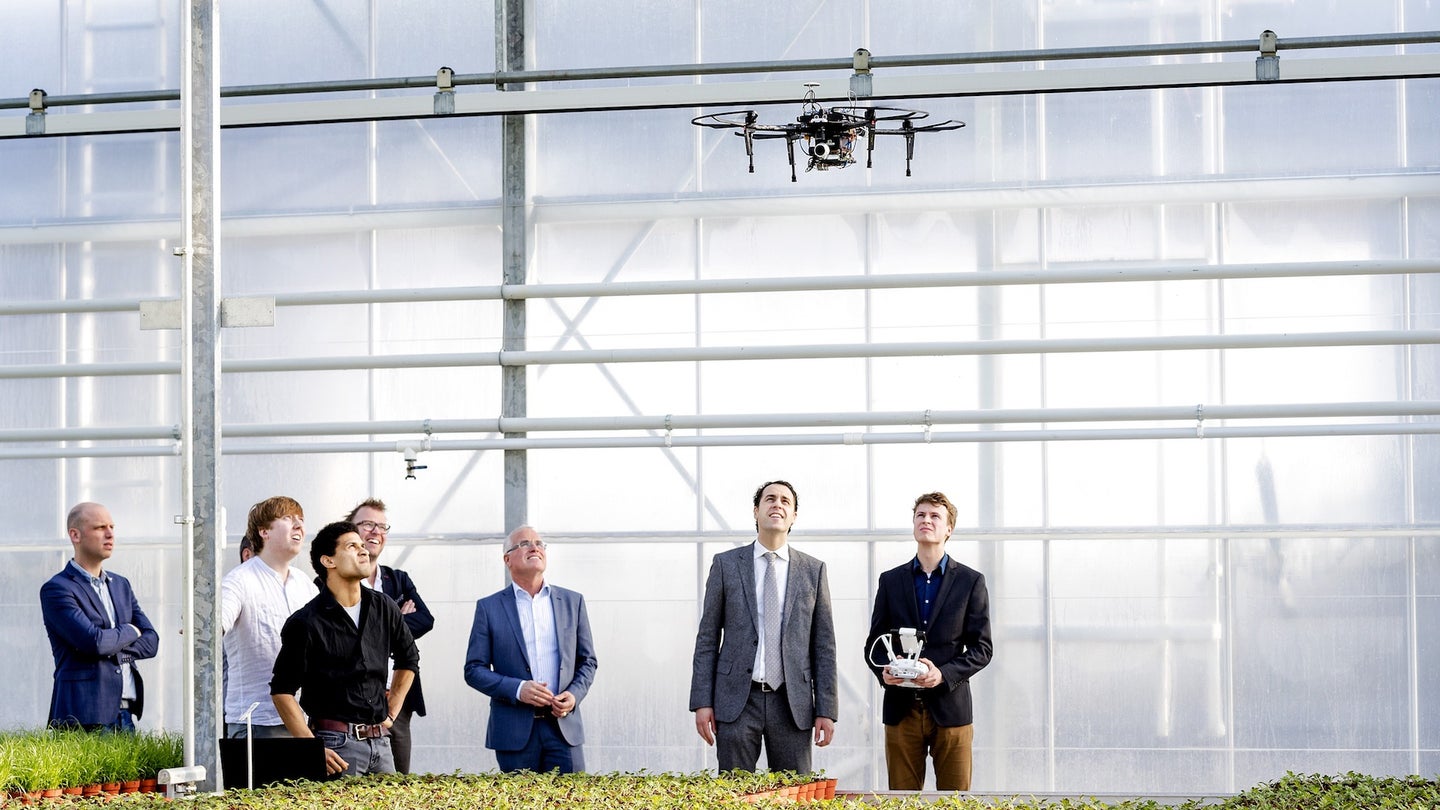Caltech Opens CAST: a Drone-Lab Focused on Robots & UAVs
Caltech just opened the Center for Autonomous Systems and Technologies, which hopes to inspire vastly ambitious “moonshot” ideas regarding drones and robotics, like the autonomous exploration of the ocean and outer space.

On Tuesday, California Institute of Technology joined academic institutions like the University of Michigan and Massachusetts Institute of Technology in establishing a dedicated drone-lab of their own—the Center for Autonomous Systems and Technologies (CAST)—which is splitting its focus between unmanned systems like drones and robots.
According to the Los Angeles Times, Caltech’s Aaron Ames has already developed a semi-autonomous robot called "Cassie" hoping for it to one day trek the Pacific Crest Trail alongside a fleet of drones and autonomously collect its surrounding data to capably, independently traverse similar territories. According to Ames, a robot like Cassie will initially have to “walk places it has never been before” to amass a substantial amount of telemetry and other data, to adapt and learn over time.
Essentially, CAST’s overarching goal is to enable drones and robots to "think," act, and react without human assistance. Reportedly, giving these unmanned systems enough time to evolve and advance would eventually lead to more substantial exploration of the ocean, space, gathering data for scientists and responding to disaster situations.
Here's a great little time-lapse of the facility being built.

According to CAST’s director and a professor of aeronautics and bioinspired engineering, Morteza ‘Mory’ Gharib, “Most systems today are very good at solving, very rapidly, the problems that they have been trained to solve. But if you throw something unknown in front of them, they get confused…The systems are basically trained so much that they cannot see outside the box.” The goal at CAST, then, is to let those systems venture outside of their predetermined reactions, to expand their capabilities and ultimately behave independently of their current restricted programming.
"It’s not just ‘think outside the box.’ There is no box,” said Gharib.
The expertise on display at CAST is impressive. Experts from NASA’s Jet Propulsion Laboratory experts, as well as from its aeronautics, machine learning, geology, planetary science, and computer science fields comprise the crew of researchers and scientists. Gharib stated that everyone is targeting “moonshots,” or scientific challenges that seem far too ambitious to reach but hopefully create inspired, motivating results. The Pacific Crest Trail hike by Cassie is one of these said moonshots, as is an autonomous aerial ambulance capable of 150 mph speeds, and a fleet of camera-drones that efficiently creates large-scale maps.
Reportedly, the idea for CAST was being brainstormed over two years ago, when Caltech asked students, researchers, and faculty to devise what such a lab would look like in reality. CAST is now the tallest indoor drone arena, which already ticks off one of those ideas proposed years ago. At three stories high, with 1,296 fans generating up to 44 mph winds, the lab can simulate all kinds of wind conditions, fog, rain, and even a hurricane vortex.
CAST’s assembly room houses an 85-foot oval track with which researchers train robots to walk independently. The space robotics lab allows them to test behavior in an area that the frictionless realities of outer space. Lorrain Fesq, chief technologist of NASA’s Jet Propulsion Lab systems engineering and formulation division, is stunned by the sophistication of CAST. “To have a facility that is this advanced in academia is very unusual,” said Fesq, adding that students will have to undergo substantial training in order to use the facility. “We hire them, and we have them work over the summer and during the school year to help us…on these projects.”
Here's Cassie taking a walk around campus.

These are the kind of lab conditions that allow for more real-world testing. Out here, there are “all kinds of disturbances that you can’t account for, that you don’t usually interact with in the labs,” said doctoral student, Jacob Reher. He added that before CAST opened, most robotic testing was limited to walking them on a treadmill in a standard lab. “Now we can really try some new things. When you have a center that’s dedicated to robotics, where you get a collaboration going between people who usually wouldn’t be working together, it spawns some really great ideas.”
